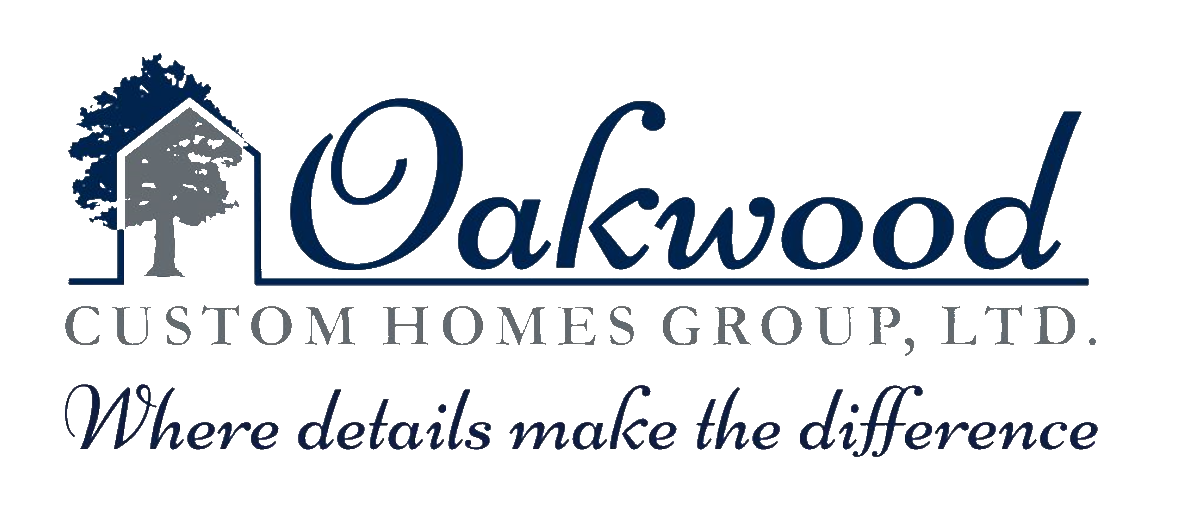FAQ
Homebuilding FAQs
How will my home be built?
Preliminary Construction:
There are many stages of construction involved in building a new home. We have outlined the three major phases of construction to help you better understand the process and to help make it easy to know how and when to make selections for your new home. Please make your choices by date requested to help prevent delays in construction.
- Home Plan and Property Lot are Selected
- Contract is signed by a new Homeowners (Buyers) and Oakwood Custom Homes Group LTD
- Financing is secured by new Homeowners
- Finance Closing-Homeowners, Title and/or Mortgage Company, & Oakwood Custom Homes
The construction phase does not start until all steps in the Preliminary Phases are completed.
IMPORTANT- You will need to make arrangements for your utilities (electricity, water, sewer, and gas). We will make arrangements for your temporary power for construction. You will also need to get a 100-year flood plan certificate, and provide access to the property (culverts if needed, and a cleared path or road if in a rural area).
Exterior Phase:
- Temp. Pole set, Forms are set and dirt is brought in to forms, Owner Selections for Exterior Phase
- Plumbing Rough-In, Beams are dug, Termite Treatment, Steel in place, Pour Slab
- Framing Structure, Owner Selections for Interior Phase
- Framing Finished, Exterior Painted, Roof Installed, Construction Clean-Up
- HVAC Rough-In, Plumbing Top-Out, Electrician Rough In
- Inspections + - (Building, Electrical, HVAC, Plumbing); Insulation Installed (walls)
- Insulation Inspection, Brick Installed, Sheetrock Installed, Tape and Float
Interior Phase:
- Texturing, Cabinets installed, Trim Carpenters Begin, Owner Selections for Finish Phase
- Trim Carpenters Finish, Painter begins
- Painting, Driveways and Porches Poured
- Countertops Installed, Vanity Tops Installed, Marble Tubs Installed (If necessary)
Finish Phase:
- Tile installed, Electrician Trim-Out (Appliances and Lightning Fixtures Installed)
- Plumbing Trim-Out, HVAC Trim Out
- Fence, Sprinkler System Installed (if necessary), Carpet Installed
- Inspections** (Building Final, HVAC Final, Plumbing Final, Electrical Final) if necessary
- Grass installed, Final Clean-up, Customer Moves-In
Can I bring my own floor plan for you to build?
Yes
Where do you build?
Within 60 miles of College Station
Budgeting FAQs
Mortgage Calculators
Understand Mortgage Qualifications
PITI:
PITI = the components of a mortgage payment (Principal, Interest, Taxes, and Insurance). Principal is the money used to pay down the balance of the loan, interest is the charge you pay to the lender for the privilege of borrowing the money, taxes refer to the property taxes you pay as a homeowner, and insurance refers to both your property insurance and your private mortgage insurance.
PMI:
Private Mortgage Insurance, or PMI, is a type of insurance that's required with some home loans. PMI doesn’t benefit mortgage loan borrowers. Instead, this insurance benefits the lender, protecting them if borrowers default on their mortgage loans. Borrowers pay the premiums each month, and if a borrower defaults on the home loan, the lender receives a percentage of the outstanding balance.
Front & Back end debt to income ratios...
- A debt-to-income ration is the percentage of a consumer’s monthly gross income that goes toward paying debts. Two kinds of DTI:
Front-end ratio:
- The percentage of income that goes towards housing costs (renters = rent amount; homeowners = PITI)
Back-end ratio:
- The percentage of income that goes toward paying all recurring debt payments, including those covered by the first DIT, and other debts such as credit card payments, car loan payments, student loan payments, etc.
Example:
In order to qualify for a mortgage for which the lender requires a debt-to-income ratio of 28/36:
- Yearly Gross Income = $45,000 / Divided by 12 = $3,750 per month income.
- $3,750 Monthly Income x .28 = $1,050 allowed for housing expense.
- $3,750 Monthly Income x .36 = $1,350 allowed for housing expense plus recurring debt.
